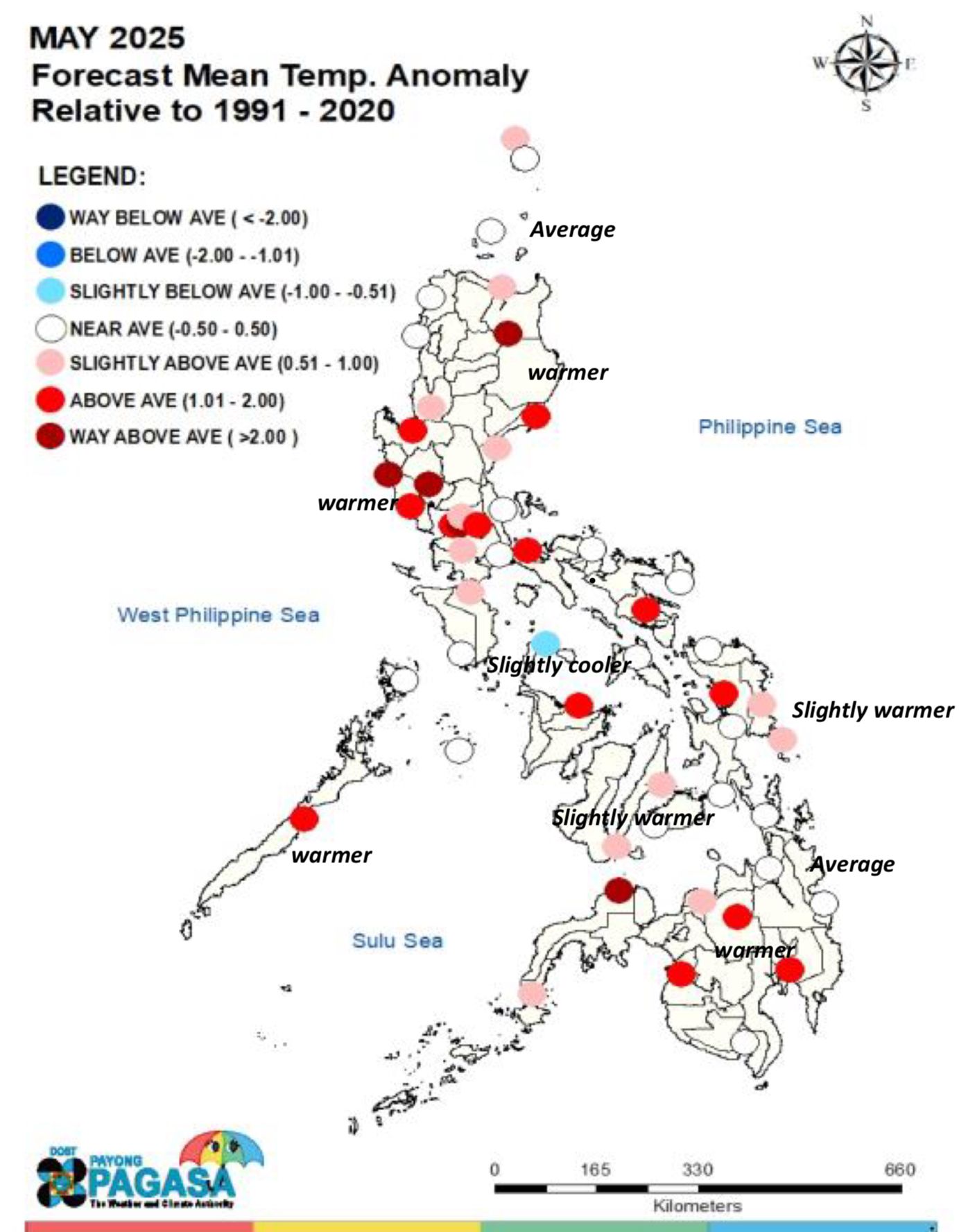PAGASA: Warm, dry season this year may not reach 2024's extreme temperatures

The Philippine Atmospheric, Geophysical and Astronomical Services Administration (PAGASA) said that this year’s warm and dry season will be "usual," as temperatures may be milder than the extreme heat experienced during the El Niño in 2024.
PAGASA-Climate Monitoring and Prediction Section Chief Ana Liza Solis explained in a radio interview on Tuesday, March 4 that the intense heat last year was exacerbated by the El Niño phenomenon, which significantly raised temperatures and contributed to record-breaking heat.
This year, while the warm weather is expected, it may not be as extreme due to the absence of such a strong El Niño effect, she added.
“Mid-March or third week of March ‘yung pagsisimula ng warm and dry season. Hindi naman sing init ng nakaraang taondahil maraming breaking last year dahil may strong El Niño (The warm and dry season will begin in mid-March or the third week of March. It won’t be as hot as last year when many records were broken due to the strong El Niño),” Solis said.
“Sa nakikita natin ngayon, usual yung tag-init pero hindi naman yung sobrang init kung ikukumpara natin last year (Based on what we see now, the heat this year is usual, but not as extreme as compared to last year),” she added.
The World Meteorological Organization has confirmed that 2024 was the warmest year on record, with temperatures 1.55 degrees Celsius higher than the pre-industrial period (1850-1900) average.
PAGASA also confirmed that 2024 is the hottest year in the Philippines since monitoring began in 1951.
READ MORE: https://mb.com.ph/2024/5/12/6-pagasa-stations-break-all-time-high-temperatures
Temperatures in the 30s
PAGASA said that, generally, near-average to above-average surface air temperatures are expected in most parts of the country from March to August except for slightly cooler to cooler than average air temperatures in some areas in extreme Northern and Southern Luzon, and the Visayas in March and April.
Based on its forecast ranges of extreme temperatures, in March, the maximum air temperature ranges are: 33 to 36.5 degrees Celsius (°C) in Northern Luzon; 30.9 to 37.5°C in lowlands Luzon; 26.2 to 28°C in mountainous Luzon; 34 to 36°C in Metro Manila; 30.9 to 35.7°C in lowlands Visayas; 32 to 36°C in lowlands Mindanao; and 32.5 to 34°C in mountainous Mindanao.
In April, the maximum air temperature ranges are: 33.3 to 38.9°C in Northern Luzon; 31.2 to 39.1°C in lowlands Luzon; 26.3 to 28.2°C in mountainous Luzon; 35.2 to 37.6°C in Metro Manila; 32 to 36.2°C in lowlands Visayas; 32.5 to 37.7°C in lowlands Mindanao; and 32.7 to 34.6°C in mountainous Mindanao.
In May, the maximum air temperature ranges are: 34 to 39.6°C in Northern Luzon; 32.2 to 39.2°C in lowlands Luzon; 25.7 to 28°C in mountainous Luzon; 35.5 to 37.4°C in Metro Manila; 31.9 to 36.9°C in lowlands Visayas; 33.2 to 36.4°C in lowlands Mindanao; and 32.5 to 34.5°C in mountainous Mindanao.
The highest recorded temperature in the Philippines is 42.2°C in Tuguegarao City, Cagayan on April 22, 1912, and again on May 11, 1969.
Meanwhile, the highest recorded temperature in Metro Manila is 38.6°C, observed on May 17, 1915.
The air temperature is different from the heat index, which combines air temperature and humidity to estimate the apparent temperature, or how hot it feels to the human body.
READ MORE: https://mb.com.ph/2025/3/3/how-pagasa-s-heat-index-reports-help-you-prepare